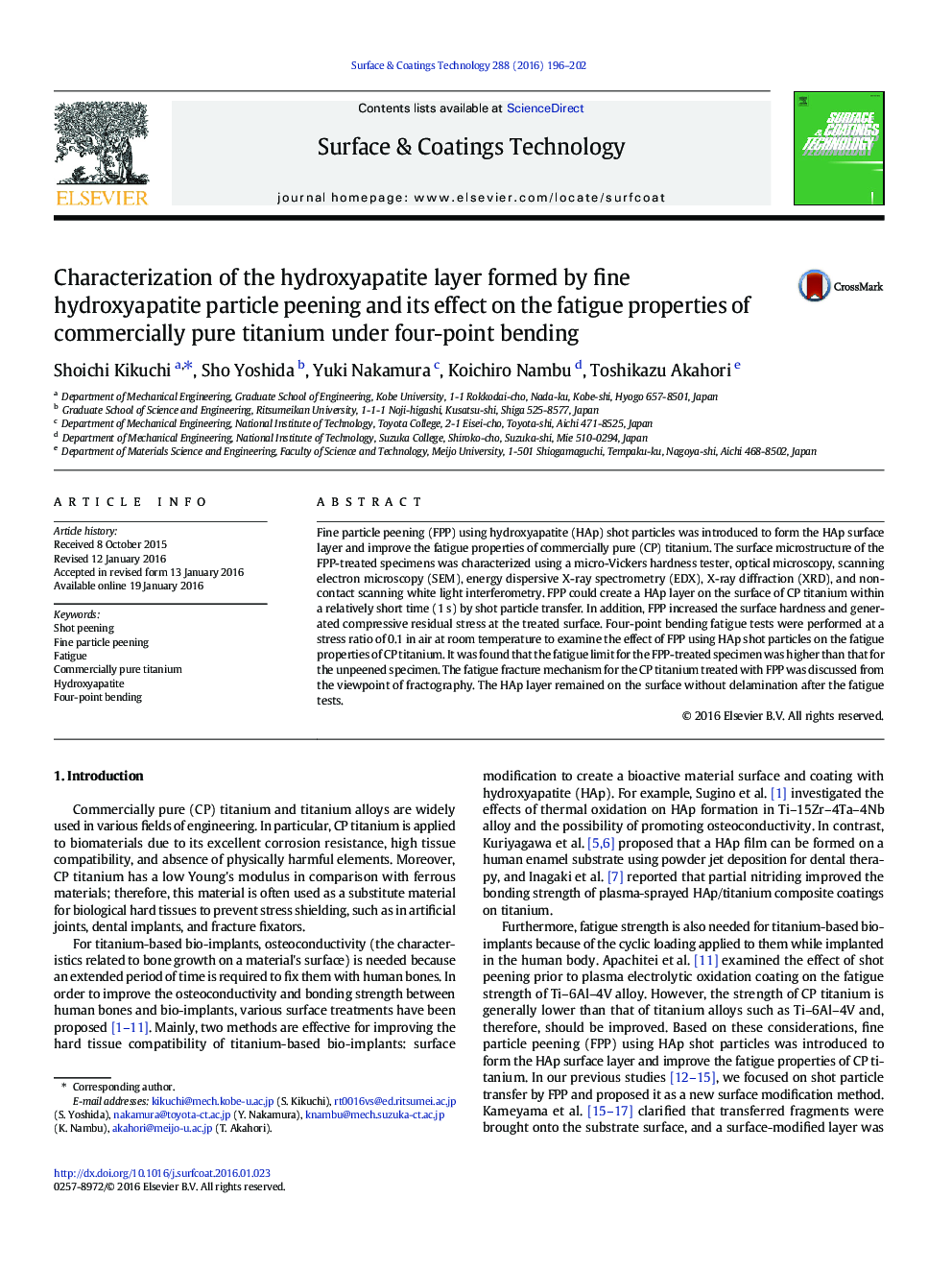| Article ID | Journal | Published Year | Pages | File Type |
|---|---|---|---|---|
| 1656720 | Surface and Coatings Technology | 2016 | 7 Pages |
•Fine hydroxyapatite particle peening can form a HAp surface layer.•The HAp layer formed on CP titanium remains after ultrasonic cleaning using acetone or fatigue tests.•FPP using HAp shot particles improves the fatigue properties of CP titanium.
Fine particle peening (FPP) using hydroxyapatite (HAp) shot particles was introduced to form the HAp surface layer and improve the fatigue properties of commercially pure (CP) titanium. The surface microstructure of the FPP-treated specimens was characterized using a micro-Vickers hardness tester, optical microscopy, scanning electron microscopy (SEM), energy dispersive X-ray spectrometry (EDX), X-ray diffraction (XRD), and non-contact scanning white light interferometry. FPP could create a HAp layer on the surface of CP titanium within a relatively short time (1 s) by shot particle transfer. In addition, FPP increased the surface hardness and generated compressive residual stress at the treated surface. Four-point bending fatigue tests were performed at a stress ratio of 0.1 in air at room temperature to examine the effect of FPP using HAp shot particles on the fatigue properties of CP titanium. It was found that the fatigue limit for the FPP-treated specimen was higher than that for the unpeened specimen. The fatigue fracture mechanism for the CP titanium treated with FPP was discussed from the viewpoint of fractography. The HAp layer remained on the surface without delamination after the fatigue tests.
